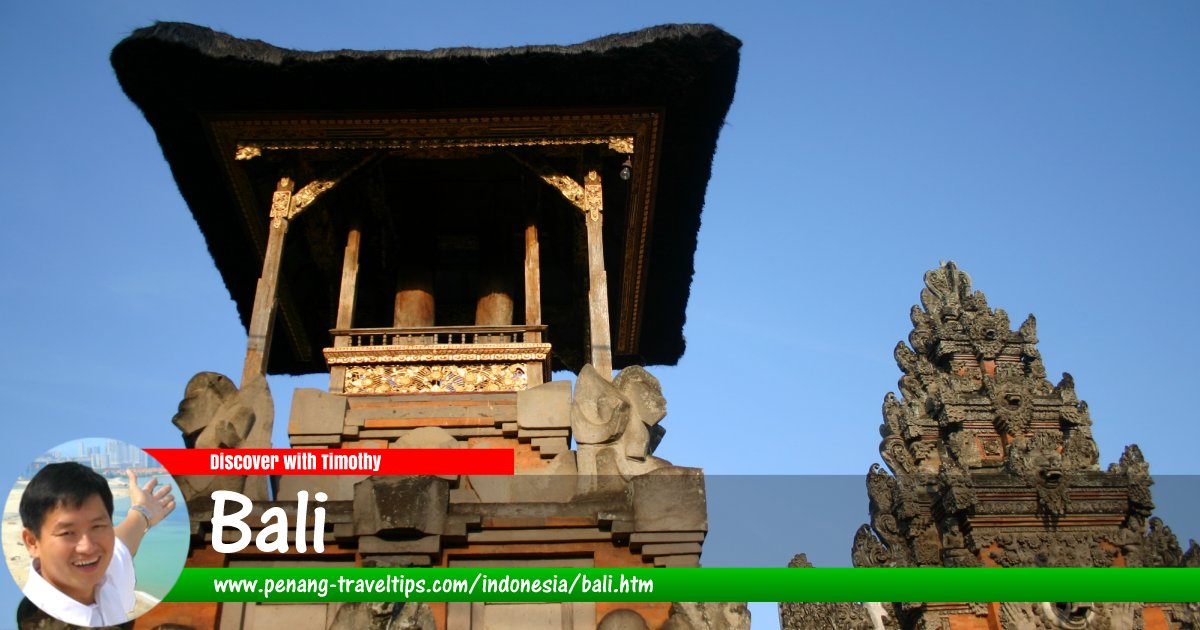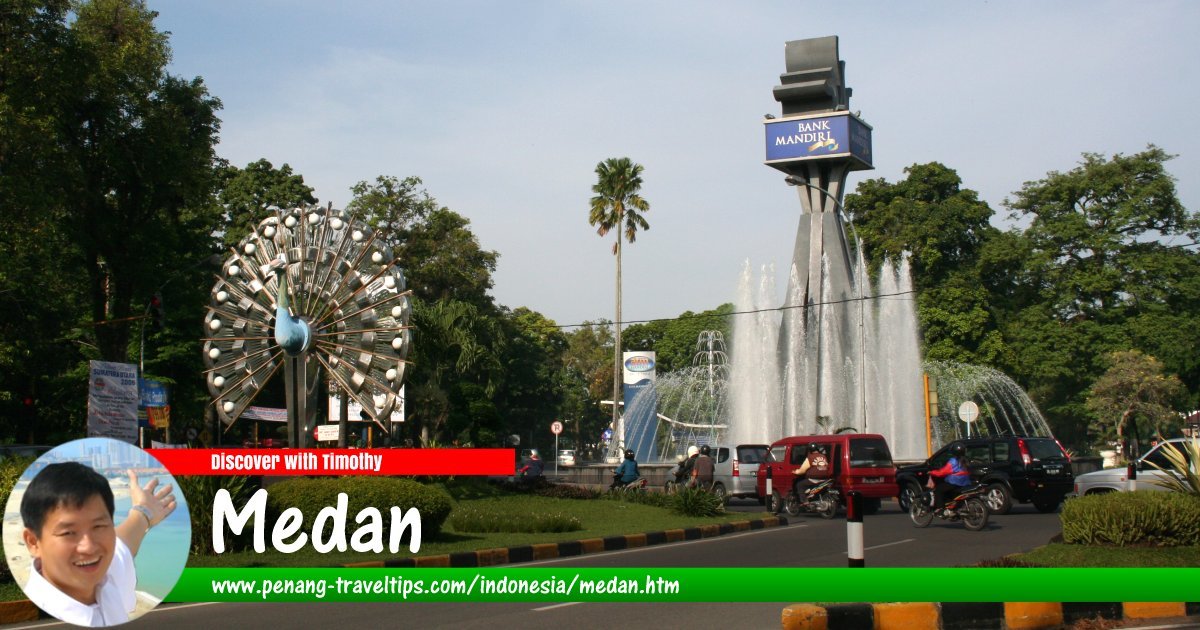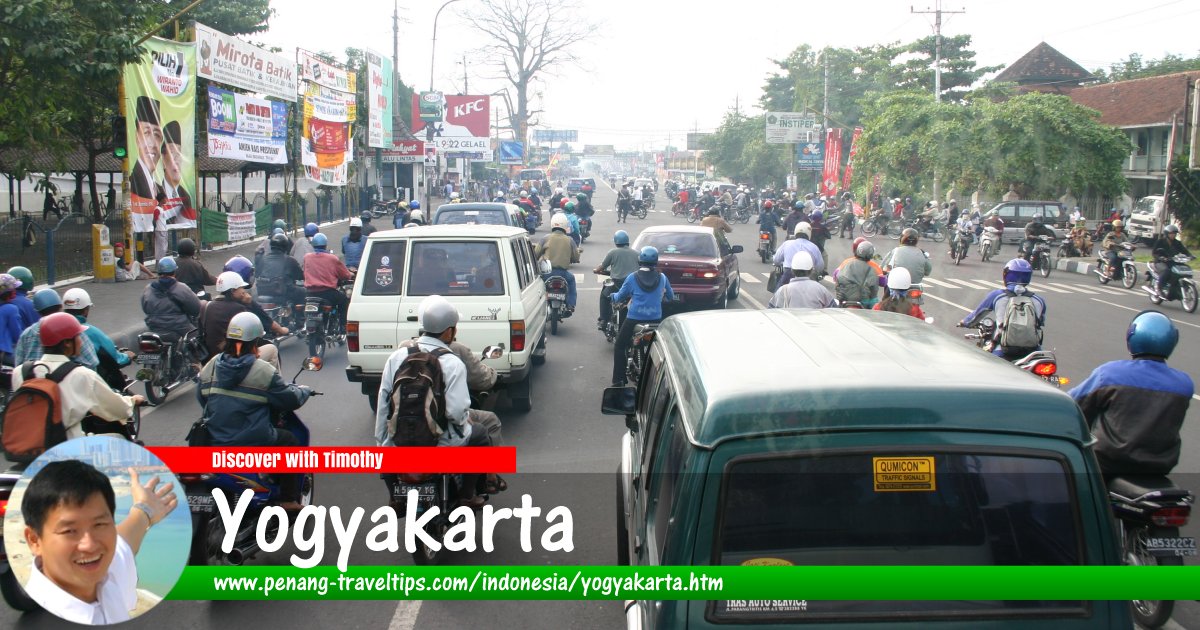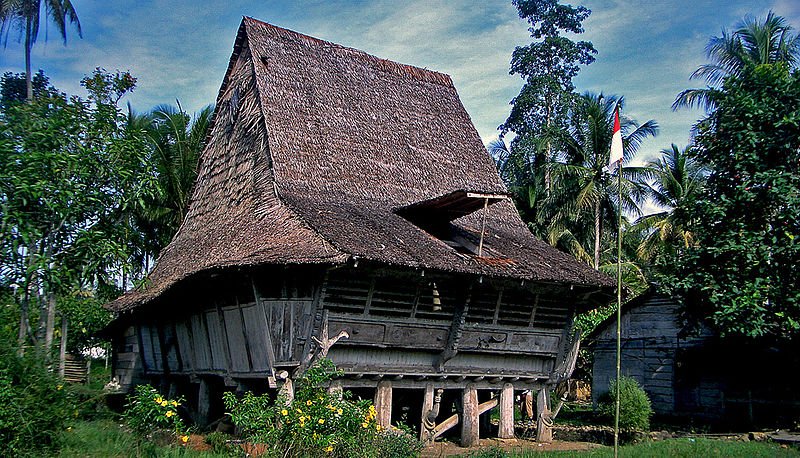 A house in Nias, Indonesia
A house in Nias, IndonesiaSource: http://commons.wikimedia.org/wiki/File:House_in_Nias_North_Sumatra.jpg
Author: monica renata

Author: monica renata

Nias, also called Pulau Nias, is an island on the west coast of Sumatra, Indonesia. It is part of Kepulauan Nias, a small archipelago which is part of North Sumatra Province. Nias has a population of about 700,000, mostly rural peasants who grow cash crops such as rubber, coconuts and cocoa.
Located some 80 km (or 125 km horizontally) from mainland Sumatra, Nias has developed its own culture away and in isolation from the rest of Indonesia. Archaeologists studying the Nias people describe its local culture as one of the new Megalithic cultures that is still being practised today. However, to say that the Nias people shun outsiders is incorrect; they have been opening trading with mainland Sumatra and other peoples of the region, while at the same time preserving their unique culture.
Today Nias is a major tourist destination in Sumatra, with a stream of visitors coming here, drawn by its many festivals, culture and architecture. Many also come here to enjoy the beaches in Nias, which offer excellent surfing.
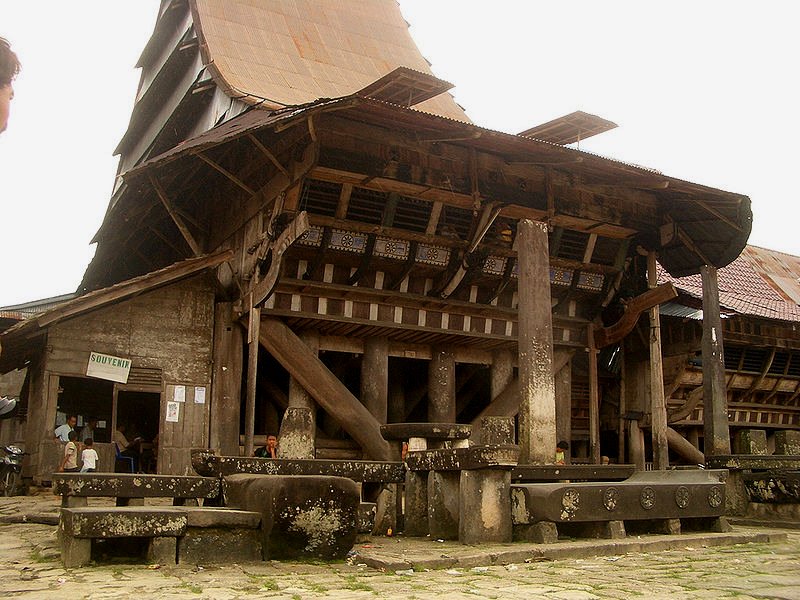 Omo Sebua, a traditional house in South Nias
Omo Sebua, a traditional house in South NiasSource: http://commons.wikimedia.org/wiki/File:Omo_Sebua,_South_Nias,_Indonesia.jpg
Author: monica renata

Author: monica renata

The beautiful fortified villages of Nias is a major attraction for visitors interested in culture. They can be found in places such as Bawumataluwo. The houses of the nobility feature ornate stone monuments which are inscribed with decorative figures and patterns. The dwellings usually have pointed thatch roofing. Most of the attractive abodes of Nias are located on the southern part of the island. These houses typically face inland, away from the sea, in high and rather inaccessible village sites. The village names usually have the word for "hill" or "mountain" to them, such as hili or bawo The people of Nias, or Niasans, call themselves Ono Niha, meaning "people's children". They call their island Tano Niha, or "people's land".
In the old days, Nias men were fierce warriors feared for their appetite for head-hunting. Today the Nias are mostly Protestant and while having discarded their head-hunting past, are still celebrating many of its harvest festivals. Today the most well known event staged for the benefit of tourists are the War Dances or Tutotolo and Stone Jumping or Fahombe. The latter, a rite of passage into manhood, requires young men to leap over two-meter-tall megaliths.
The main towns in Nias are Gunung Sitoli and Teluk Dalam. Gunung Sitoli is the administrative capital of Nias Regency, a division comprising 32 districts, while Teluk Dalam is the capital of Nias Selatan Regency, with 8 districts.
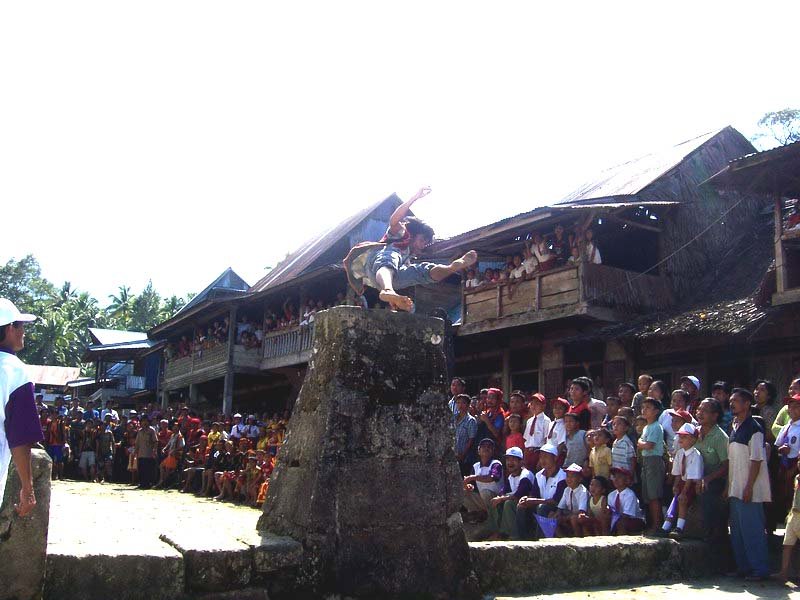 Stone-jumping performance in Nias
Stone-jumping performance in NiasSource: http://commons.wikimedia.org/wiki/File:Lompat_Batu_Nias.jpg
Author: Doni Ismanto

Author: Doni Ismanto

Going to Nias
The Nias Islands are about an hour by flight from Medan, from where there are scheduled flights to Gunungsitoli. Alternatively you can go by land, from Medan to Sibolga, and from there, take a ferry for the next 85 miles to Gunungsitoli or 95 miles to Teluk Dalam.Travel within Nias
It is most convenient to make arrangements with a tour operator. Within Nias, look out for motorcycles for rent to get around.Places of Interest in Nias
- Gunung Sitoli
The biggest town in Nias. Most visitors arrive here by flight orn ferry. - Teluk Dalam
Second biggest town in Nias, linked by ferry to the mainland. - Lagundi
A beautiful bay area with tourist infrastructure such as lodgings, with excellent surfing. - Bawomataluwo
A now touristy village where the stone-age cultures are showcased to visitors. - Hillisimaetano
A quiet, rural village in Nias where the villagers are mainly peasants. - Gomo Lahusa
Village with megalithic stones. - Gomo
Another village with megalithic stones.
 Latest updates on Penang Travel Tips
Latest updates on Penang Travel Tips
 Destination Indonesia
Destination Indonesia

Copyright © 2003-2025 Timothy Tye. All Rights Reserved.

 Go Back
Go Back